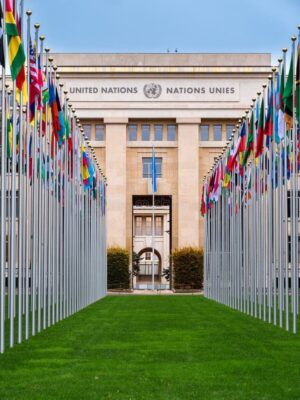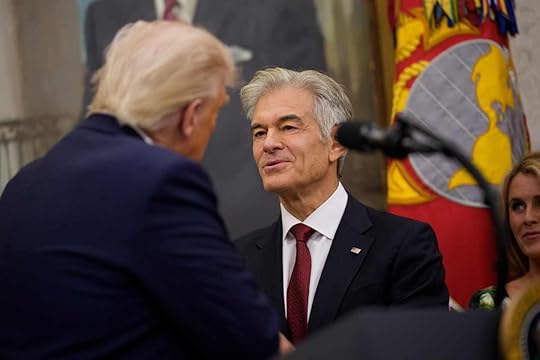Stuart Jeanne Bramhall's Blog: The Most Revolutionary Act , page 18
September 2, 2025
Cracks in ranks: No victory, no exit in ‘Israel’s Gaza predicament
\By Al Mayadeen English
“Israel’s” military is mobilizing 60,000 additional reservists, adding to the 70,000 already under call-up orders, in preparation for a renewed ground incursion into Gaza City as part of the ongoing “Iron Swords” campaign.
The last major operation to occupy Gaza City came at a high cost. Now, according to Israeli military correspondent Avi Ashkenazi in a report published by Maariv, commanders are warning that the next stage could prove even more dangerous.
The dense urban terrain, vast tunnel networks, and high-rise buildings of Gaza City remain formidable battlegrounds. The report states that Hamas has had months to bolster its defenses, planting improvised explosive devices (IEDs), booby-trapping buildings and tunnels, and deploying snipers and anti-tank units across likely combat zones.
Two-stage strategy, high-stakes cautionAccording to Maariv, the Israeli military plans to execute the campaign in two phases. This operation is expected to last months, not weeks.
Mounting friction between the military and the governmentThe report by Avi Ashkenazi highlights growing tensions between military leaders and the government of Prime Minister Benjamin Netanyahu. Senior Israeli officers reportedly urge continued negotiations, warning against launching another high-risk incursion without exhausting all diplomatic options.
Meanwhile, on the ground, reservists and active-duty soldiers have begun questioning the broader strategy. “What comes after Gaza City?” one soldier reportedly asked, reflecting the skepticism felt across the ranks.
Veterans of recent operations point to Rafah, Khan Younis, Jabalia, Beit Hanoun, and al-Zaytoun, all of which were invaded multiple times but failed to produce a lasting outcome.
An elusive ‘image of victory’Even if the military succeeds in re-entering Gaza City, doubts persist over whether such an operation will alter the broader course of the war. As Ashkenazi notes, the symbolism of “battlefield achievements” has become increasingly hollow.
In December 2023, a Hanukkah menorah was lit in Gaza’s Palestine Square, a moment widely circulated in the occupation’s media as a symbol of control. Just days later, the Israeli occupation forces showcased their bombing of al-Shifa Hospital, parading it as another so-called milestone.
Yet, as noted by military correspondent Avi Ashkenazi in Maariv, such displays failed to produce the long-promised image of victory. The Israeli occupation continues, the Palestinian resistance endures, and international criticism mounts.
Now, with tens of thousands of reservists once again deployed and Gaza facing another wave of devastation, Ashkenazi and others raise the critical question: Where will “Israel” find its image of victory, and how many lives will it cost this time?
[…]
UN Assembly Moves to Geneva After U.S. Bars Palestinian Delegation

The United Nations General Assembly will convene its September session in Geneva instead of New York, following the United States’ refusal to grant entry visas to Palestinian President Mahmoud Abbas and dozens of senior officials.
The relocation marks a rare institutional challenge to the host nation and reflects mounting global frustration over Washington’s obstruction of Palestinian participation amid Israel’s ongoing war on Gaza.
The U.S. State Department justified the visa denial on grounds of “national security,” accusing the Palestinian Authority and the Palestine Liberation Organization of “undermining peace efforts” through legal appeals to the International Criminal Court and the International Court of Justice.
These appeals include formal charges of genocide and apartheid against Israel, claims the U.S. argues breach diplomatic norms and politicize international legal forums.
The decision affects approximately 80 Palestinian officials, although the Palestinian Mission to the UN in New York will continue operating under a limited waiver.
The move has drawn sharp criticism from legal experts and international diplomats, who say it violates the 1947 UN Headquarters Agreement, which obligates the host country to facilitate access for all accredited delegations.
In 1988, the UN relocated its session to Geneva after the U.S. denied a visa to Yasser Arafat, then head of the PLO. The current relocation is similarly aimed at ensuring full Palestinian participation, particularly in a scheduled September 22 segment dedicated to Palestinian rights.
European leaders have condemned the U.S. decision. Spain’s Prime Minister described the move as “unjust,” while France reaffirmed that UN platforms must remain accessible to all recognized delegations.
The Geneva session also coincides with growing momentum among several countries, including France, the United Kingdom, and Canada, to formally recognize Palestinian statehood, adding diplomatic weight to the proceedings.
Palestinian officials have denounced the U.S. action as a deliberate attempt to silence their voice at a time when Gaza faces mass displacement, starvation, and what UN experts have described as genocidal violence.
President Abbas is expected to address the Assembly in Geneva, where he will call for international protection, recognition of Palestinian sovereignty, and accountability for war crimes.
The Geneva session is expected to amplify calls for action under the “Uniting for Peace” resolution, which empowers the General Assembly to recommend collective measures when the Security Council is unable to act due to political obstruction or lack of consensus.
Advocacy groups are urging the UN to consider deploying international protection forces to Gaza and to suspend Israel’s privileges within the UN system until humanitarian access is restored.
Beyond its logistical implications, the relocation signals a deeper shift in global diplomacy, where procedural justice and international law are being reasserted against political obstruction.
The Geneva gathering is expected to draw high-level delegations, legal experts, and civil society leaders, all converging to confront the worsening crisis and to chart a path forward for Palestinian self-determination.
[…]
Via https://imemc.org/article/un-assembly-moves-to-geneva-after-u-s-bars-palestinian-delegation/
Belgium announces sanctions against Israel
 Israeli soldiers operate tanks near the northern borders of Gaza on August 18, 2025. © Photo by Elke Scholiers / Getty Images
Israeli soldiers operate tanks near the northern borders of Gaza on August 18, 2025. © Photo by Elke Scholiers / Getty ImagesRT
Belgium will recognize Palestinian statehood and impose sanctions on Israel over its war in Gaza, the country’s Foreign Ministry has announced.
The Western European country, which hosts the headquarters of both the EU and NATO, unveiled the measures on Tuesday as pressure grows on Israel to reach a ceasefire with Hamas and allow more humanitarian aid into the besieged Palestinian enclave.
In light of the “humanitarian tragedy in Gaza,” Belgium has decided to “increase pressure on the Israeli government and Hamas terrorists,” Belgian Foreign Minister Maxime Prevot wrote on X. “This is not about punishing the Israeli people, but about ensuring that their government respects international and humanitarian law and takes action to change the situation on the ground,” he added.
The sanctions include a ban on imports of products from Jewish settlements in the West Bank and restrictions on consular assistance for Belgian nationals living in settlements considered illegal under international law.
Brussels will also review procurement involving Israeli companies and blacklist “two extremist Israeli ministers, several violent settlers, and Hamas leaders,” Prevot said. He added that Belgium would push for the suspension of the EU’s trade agreement with Israel.
Several countries, including France, plan to recognize Palestine at the UN General Assembly later this month, drawing strong criticism from Israel.
Last month, Israeli Prime Minister Benjamin Netanyahu accused France and Australia of failing to tackle anti-Semitism, arguing that recognition of Palestine would only embolden Hamas.
Israel has rejected UN warnings of famine in Gaza, where more than 63,500 people have been killed since October 2023, according to local health authorities. West Jerusalem has pledged to allow the delivery of aid, but not through distribution points it claims are controlled by Hamas.
[…]
Via https://www.rt.com/news/623899-belgium-israel-sanctions-gaza/
Dr. Oz saving government more money than Elon Musk and ‘DOGE’

President Donald Trump congratulates Mehmet Oz in April as TV’s “Dr. Oz” is sworn in as the Medicare and Medicaid Services administrator. Photo: Getty Images
By Chris PopeOz’s attempts to cut Medicare’s costs have been frustrated by statutory constraints.
Elon Musk’s leadership of the temporary “Department of Government Efficiency” dominated the beginning of President Donald Trump’s second term. DOGE, as Musk branded the new entity, was tasked with reducing federal spending through cutbacks to personnel, contracts, grants and “woke” initiatives.
An outcry from those targeted generated much news coverage. But “DOGE” had no statutory power. It was largely boxed in by existing appropriations and legal entitlements to federal funds established by Congress — and many of its cuts would be reversed in court. The so-called department also greatly exaggerated the savings it generated, by counting reductions in credit authority which were unlikely to be used. Skeptical analysts suggest that “DOGE” likely generated a one-time reduction in federal spending of just $15 billion.
By contrast, since Trump appointed celebrity physician Mehmet Oz to run the Centers for Medicare and Medicaid, the agency has generated savings of more than $50 billion — which will likely increase over time.
Although Oz’s appointment received much less media attention than Musk’s, it came with much more power. CMS controls more government spending through its management of Medicare, Medicaid, the Children’s Health Insurance Program and the Insurance Marketplace (about $2 billion in 2023), than Congress does through all annual appropriations ($1.7 billion).
When Oz was nominated to run CMS, the New York Times accused him of having “sown misinformation — about Covid treatments, weight loss hacks and unproven supplements,” but it otherwise gave little attention to his ambitions. These have proven to be substantial, and CMS has generated major savings in the few months that Oz has been in charge.
Over recent years, the Biden administration sought to maximize enrollment in publicly funded health insurance, regardless of the cost to taxpayers. This was a bonanza to insurers — allowing them to claim payments for individuals enrolled in both “Obamacare” and Medicaid plans.
CMS staff found insurers getting paid for Medicaid beneficiaries enrolled in multiple states, including one who was receiving benefits from 13 different states.
Following Oz’s appointment, CMS generated an expected $11 billion in savings for 2026 by tightening oversight of enrollment in the Obamacare plans created under the Affordable Care Act of 2010. It has also saved up to $25 billion per year, by prohibiting states from artificially inflating federal Medicaid reimbursements by taxing benefits. Congress incorporated these reforms in the One Big Beautiful Bill Act, to prevent a future administration from reversing them.
Under Oz, CMS has also reined in the ability of states to claim Medicaid funding for nonmedical services — a maneuver that has increasingly allowed them to inflate other expenditures at federal expense. This will save $3 billion in 2025, and slow costs from surging further. Oz has also reversed the Biden administration’s last-minute attempt to expand Medicare and Medicaid to cover weight-loss drugs for cosmetic purposes — which Congress had specifically sought to prohibit.
Nonetheless, Oz’s attempts to cut Medicare’s costs have been frustrated by statutory constraints. CMS recently rolled back the expansion of poorly designed payments for skin substitutes, whose cost to Medicare surged to $10 billion from $300 million between 2019 to 2024. But federal law requires such changes to be offset by payment increases elsewhere — and so no savings will accrue to taxpayers.
Most Medicare beneficiaries now receive their benefits through private insurers, which are paid according to the medical needs of enrollees. Yet insurers have been able to inflate these payments by claiming compensation for ambiguous medical conditions and attracting enrollees whose diagnoses are overcompensated by Medicare. Federal analysts have estimated that this increased the cost of the program by $84 billion in 2024.To combat this, Oz greatly expanded audits of payments to insurers, by combining new IT systems to detect suspicious payments with a fiftyfold increase in auditing staff. Still, CMS estimates that this will save less than $1 billion per year. The bulk of the overpayment is due to the program’s basic rules, which Congress would need to amend.
Although CMS reforms this year have generated tens of billions of dollars in savings, Medicare’s annual cost is estimated to increase by more than $1 trillion over the next decade. This steady increase is largely beyond Oz’s control, as federal law requires the program to cover any newly developed medical service, regardless of its value or cost-effectiveness. That makes Medicare the primary contributor to the rising national debt.
Federal law gives Oz much more power to cut government spending than it did Elon Musk. But that power remains greatly constrained by laws stipulating the scope of eligibility, benefits and payment arrangements. Only congressional action can rein in the automatic growth of Medicare and Medicaid expenses, which is needed to make the nation’s fiscal situation sustainable.
[…]
Where’s the West?

Dmitry Orlov
There is a great deal of diplomatic activity currently taking place in the East. The heads of state from around the world are assembling in Beijing to mark the 80th anniversary of the victory over imperial Japan with a large military parade (a rarity in China). Although most people in the West — of those who know some history — think that the US nuclear bombing of Hiroshima and Nagasaki ended the war, it was actually the smashing of Japan’s Kwantung army by the Red Army of the USSR that did it, and the Chinese and the Koreans definitely remember this fact. It should be no surprise, then, that Vladimir Putin was received in Beijing as the guest of honor.
Other events taking place are the Shanghai Cooperation Organization meeting in Tianjin and the 10th annual Eastern Economic Forum in Vladivostok. These are all significant events where the future of the world is being shaped by the world’s leaders.
But where is the West in all of this? It is missing!
This should not have come as a surprise. Consider the following. In 2000 GDP by PPP (Gross Domestic Product by Purchasing Power Parity, which is about the only economic measure worth considering when comparing nations) for the G7 countries was $22.3 trillion while BRICS+ (the countries, not the organization) trailed at $10.7 trillion. At the time, the West was dominant throughout the planet, leading in technology, science, education, military power and soft power (owning most of the world’s mass media).
Now fast forward by a mere quarter of a century to today. BRICS+ now stands at $80.3 trillion while G7 trails behind at $58.5 trillion. In terms of economic might, BRICS+ is now 1.5 times more powerful than G7. The West is no longer the leader in either science or technology, especially not as it affects military power. It is trailing BRICS+ in education. Western-owned mass media are still spreading their eye-watering stench throughout the planet, but most of the world has gained a measure of immunity from it.
Now let’s fast forward by another mere quarter of a century, to 2050. BRICS+ will then stand at $640 trillion while G7 will be far behind at $152 trillion, which is four times smaller. The collective West will no longer be part of the global agenda, never mind shaping or controlling it. It will simply be ignored.
Although GDP by PPP is a good reflection of relative economic might, an even better metric is industrial productive capacity, which grew by 1.7 since 2000 for the world as a whole. But this 70% growth was far from evenly distributed. China grew by a factor of 10 (that’s 1000% growth!), India by 330%, Russia by 220%. Meanwhile, US industrial production increased by 10% and has been stagnant since 2007. Germany grew by 7% overall and has managed to drop by 10% since 2007. Other G7 nations have done even worse: Italy is at 73% from its peak in 2007, Japan is at 78%.
Is that the worst of it? By no means! The worst of it is that the world is already starting to ignore the West. Those world leaders gathering in Beijing, in Tianjin and in Vladivostok are there to discuss the shape of the future and the West will clearly be no part of it. The Western plan is a failure and it is up to the successful countries, such as China, India and Russia to show the way forward to the others.
Whose fault is that? Who destroyed their industrial base by offshoring jobs for the sake of corporate profits? Who weaponized the Ukrainians and prodded them into a futile war of attrition against Russia? Who destroyed their own prosperity using anti-Russian sanctions? Who destroyed their energy sector with the fictional climate emergency and the idiotically misguided Green New Deal? And who is now destroying the US economy using misguided import tariffs which, in a year or so, will translate to high inflation, at which point the US federal budget will be consumed by high interest rates?
Those in the G7 countries who think that their national leaders, their words and their deeds, are still somehow worthy of discussion, may want to consider shifting their attentions to more profitable and/or pleasurable pursuits.
[…]
Via https://boosty.to/cluborlov/posts/b85da1ae-a459-4a0d-bb52-fac50cbe83cc
September 1, 2025
Trump demands drug companies release data on COVID vaccines to the public

Sep. 1, 2025
WASHINGTON — President Trump on Monday demanded drug companies make their data on the effectiveness of COVID-19 vaccines available to the public, suggesting that the “question” over whether the jab actually saved lives has “ripped apart” the US Centers for Disease Control and Prevention (CDC).
“It is very important that the Drug Companies justify the success of their various Covid Drugs. Many people think they are a miracle that saved Millions of lives. Others disagree! With CDC being ripped apart over this question, I want the answer, and I want it NOW,” Trump wrote in a lengthy Truth Social post.
“I have been shown information from Pfizer, and others, that is extraordinary, but they never seem to show those results to the public. Why not??? They go off to the next ‘hunt’ and let everyone rip themselves apart, including Bobby Kennedy Jr. and CDC, trying to figure out the success or failure of the Drug Companies Covid work.”
At least 70% of Americans have received both jabs of the COVID-19 vaccine as of 2025 — with over 711 million doses of the vaccine having been administered in the US, per the World Health Organization.
But the COVID shots, administered by Moderna, Pfizer and Johnson & Johnson, were also criticized as early as 2021 for not preventing breakthrough infections, meaning some who received the vaccine still got the virus.
Trump rarely speaks about the pandemic other than to praise the development of the COVID vaccines, which he called a “Christmas miracle” as production was ramping up in December 2020 just before he left the White House.
Just 30% of Republicans now view the COVID jab as safe, while 55% of independents and 87% of Democrats do, a Kaiser Family Foundation poll found in May.
The president’s critics claim he wasn’t serious enough about the pandemic in the beginning, while even some of his supporters have criticized his initial approval of lockdowns in March 2020.
Vaccine science has recently upended relationships within the US Department of Health and Human Services (HHS), with Secretary Robert F. Kennedy Jr. finding himself at odds with other officials after ending emergency authorization for COVID jabs and refining their eligibility standards to exclude most healthy adults and children.
CDC Director Susan Monarez was also fired on Wednesday after less than a month in the job. A White House official told the New York Times she was shown the door after it became clear her opinions on vaccines differed from those of Kennedy, who is a known vaccine skeptic.
Monarez’s lawyers Abbe Lowell and Mark Zaid argued that she was let go due to her unwillingness to fire other health officials and her support of vaccines.
“When CDC Director Susan Monarez refused to rubber-stamp unscientific, reckless directives and fire dedicated health experts, she chose protecting the public over serving a political agenda. For that, she has been targeted,” they said in a statement. “This is not about one official. It is about the systematic dismantling of public health institutions, the silencing of experts, and the dangerous politicization of science.”
The turmoil at HHS continued as other top CDC officials resigned in protest of Morarez losing her post, including Dr. Demetre Daskalakis, head of the National Center for Immunization and Respiratory Diseases, Dr. Dan Jernigan, head of the National Center for Emerging and Zoonotic Infectious Diseases, and chief medical officer Dr. Deb Houry.
[…]
Common painkillers like Advil and Tylenol supercharge antibiotic resistance
 Credit: Shutterstock
Credit: ShutterstockScience Daily
Ibuprofen and acetaminophen (paracetamol) are common over-the-counter medications that many of us reach for when we’re sick. But new research from the University of South Australia shows that these trusted staples are quietly fuelling one of the world’s biggest health threats: antibiotic resistance.
In the first study of its kind, researchers found that ibuprofen and acetaminophen are not only driving antibiotic resistance when used individually but amplifying it when used together.
Assessing the interaction of non-antibiotic medications, the broad-spectrum antibiotic ciprofloxacin, and Escherichia coli (E. coli) — a common bacteria that causes gut and urinary tract infections - researchers found that ibuprofen and acetaminophen significantly increased bacterial mutations, making E. coli highly resistant to the antibiotic.
It’s an important finding that has serious health implications, particularly for people in aged care homes, where multiple medications are regularly administered.
The World Health Organization reports that antimicrobial resistance is a global threat to public health, and that bacterial resistance was directly responsible for 1.27 million global deaths in 2019.
Lead researcher UniSA’s Associate Professor Rietie Venter says the findings raise important questions about the risks of polypharmacy in aged care.
“Antibiotics have long been vital in treating infectious diseases, but their widespread overuse and misuse have driven a global rise in antibiotic-resistant bacteria,” Assoc Prof Venter says.
“This is especially prevalent in residential aged care facilities, where older people are more likely to be prescribed multiple medications — not just antibiotics, but also drugs for pain, sleep, or blood pressure — making it an ideal breeding ground for gut bacteria to become resistant to antibiotics.
“In this study we looked at the effect of non-antibiotic medicines and ciprofloxacin, an antibiotic which is used to treat common skin, gut or urinary tract infections.
“When bacteria were exposed to ciprofloxacin alongside ibuprofen and acetaminophen, they developed more genetic mutations than with the antibiotic alone, helping them grow faster and become highly resistant. Worryingly, the bacteria were not only resistant to the antibiotic ciprofloxacin, but increased resistance was also observed to multiple other antibiotics from different classes.
“We also uncovered the genetic mechanisms behind this resistance, with ibuprofen and paracetamol both activating the bacteria’s defences to expel antibiotics and render them less effective.”
The study assessed nine medications commonly used in residential aged care: ibuprofen (an anti-inflammatory pain relief), diclofenac (an anti-inflammatory to treat arthritis), acetaminophen (paracetamol for pain and fever), furosemide (for high blood pressure), metformin (for high sugar levels linked to Diabetes), atorvastatin (to help lower cholesterol and fats in the blood), tramadol (a stronger pain medication post-surgery) , temazepam (used to treat sleeping problems), and pseudoephedrine (a decongestant).
Assoc Prof Venter says the study shows how antibiotic resistance is a more complex challenge than previously understood, with common non-antibiotic medications also playing a role.
“Antibiotic resistance isn’t just about antibiotics anymore,” Assoc Prof Venter says.
“This study is a clear reminder that we need to carefully consider the risks of using multiple medications — particularly in aged care where residents are often prescribed a mix of long-term treatments.
“This doesn’t mean we should stop using these medications, but we do need to be more mindful about how they interact with antibiotics — and that includes looking beyond just two-drug combinations.”
The researchers are calling for further studies into drug interactions among anyone on long-term medication treatment regimes so we can gain a greater awareness of how common medications may impact antibiotic effectiveness.
[…]
Via https://www.sciencedaily.com/releases/2025/08/250826005209.htm
Tens of thousands attend funeral of Yemen’s PM, ministers assassinated by Israel

Massive crowds attend the funeral for Prime Minister Ahmed al-Rahawi and other ministers, who were martyred in an Israeli strike last week, in the capital, Sana’a, September 1, 2025.(Photo by al-Masirah)
Press TV
Massive crowds poured into Yemen’s capital, Sana’a, for the funeral of Prime Minister Ahmed Ghaleb al-Rahawi and several ministers martyred in an Israeli strike last week.
The ceremony, held on Monday in Al-Sabeen Square, drew mourners from across the country. Amid the grief, attendees voiced steadfast solidarity with the Palestinian people, who have endured nearly 23 months of Israel’s genocidal war, despite the ongoing Israeli attacks on Yemen itself.
Mourners chanted slogans such as “God is Great, Death to America, Death to Israel,” as Mohammed Miftah, the acting Prime Minister of Yemen, stressed that the assassination of al-Rahawi and other ministers won’t succeed in destabilizing the foundations of the Yemeni state, and vowed revenge as well as an internal security crackdown against spies.
“We are facing the strongest intelligence empire in the world, the one that targeted the government, the whole Zionist entity (comprising) the US administration, the Zionist entity, the Zionist Arabs and the spies inside Yemen,” Miftah told the mourners at the al-Saleh mosque in al-Sabeen square, Reuters reported.
On Thursday, Israeli airstrikes on the Yemeni capital claimed the lives of Prime Minister al-Rahawi of the National Government of Change and Construction, and 12 other senior officials.
The Israeli airstrike, which also left several senior ministers wounded, marks a significant escalation in Israel’s ongoing military aggression against Yemen.
The Sana’a government was holding a routine workshop to assess its activities over the past year when it was targeted by Israeli warplanes.
Since the onset of Israel’s genocidal war on the Gaza Strip in October 2023, Yemen’s forces have carried out scores of operations in support of the war-hit Gazans, striking targets throughout the occupied Palestinian territories, in addition to targeting Israeli ships or vessels heading towards ports in the occupied territories.
Israel launched a genocidal war on Gaza on October 7, 2023, after the Palestinian resistance movement Hamas waged the surprise Operation Al-Aqsa Storm against the occupying entity in response to the regime’s decades-long campaign of death and devastation against the Palestinians.
The regime’s bloody onslaught on Gaza has so far killed more than 63,500 Palestinians, mostly children and women.
[…]
Via https://www.presstv.ir/Detail/2025/09/01/754173/Huge-crowds-attend-funeral-Yemen-PM-ministers-
Departing CDC Leader Blasts RFK Jr. Over Bombshell COVID Vaccine Threat
 Getty Images Tom Latchem
Getty Images Tom Latchem The most senior official to quit the CDC in protest at the firing of its director has warned against Robert F. Kennedy Jr.’s “dangerous” plan—revealed by the Daily Beast last week—that could ban the COVID-19 mRNA vaccine.
Debra Houry, chief medical officer at the Centers for Disease Control and Prevention and deputy director for program and science, abruptly quit last Wednesday along with three other top CDC officials.
That followed the firing of their boss, CDC director Susan Monarez, but the officials also complained about the health secretary’s refusal to engage on science and policy issues with experts from the public health agency.
In an interview with the Daily Beast following her resignation, Houry revealed her belief that RFK Jr. was taking his lead on immunization matters from the discredited anti-vax group he himself used to lead, Children’s Health Defense, rather than from experienced CDC physicians like herself.
When asked if she would be surprised to see Kennedy yank the COVID mRNA vaccine off the market altogether amid claims it is causing “vaccine injuries,” as reported by the Beast last Monday, Houry replied: “Maybe not, maybe not.”
Houry said she felt it would be “difficult” for the Trump administration to pull the jab altogether “right now,” because it still has approval from the U.S. Food and Drug Administration (FDA). The FDA would, by law, have to prove the vaccines were unsafe.
But she added: “I think we have seen that policy decisions are sometimes made without science, and… there’s been a lot of things that I have been surprised at that have happened.”
Since March, the FDA has been headed up by Trump ally Marty Makary, who has questioned the necessity of COVID-19 mRNA vaccines in some cohorts of the U.S. population.
In May, he announced that the FDA would narrow eligibility to people over 65 or those at high risk, and compel manufacturers to undertake extensive studies to determine the benefits for children and healthy young adults. That came into effect last week, with the support of RFK Jr.
Houry said that if the government were to axe COVID mRNA vaccines altogether, it would see an increase in the deaths of the vulnerable—including babies.
“If all COVID vaccines were gone, that would be devastating. What we would see is older adults, or those with multiple medical conditions, or young babies, would be more likely to die,” she said.
“Right now, the COVID variants aren’t quite as virulent as earlier, and as a natural immunity in general, just with some of the exposure… is more protective. Right now, in the U.S., people haven’t been that sick with it.
“But that doesn’t mean that it wouldn’t happen. And so you want to make sure that you’re prepared. And if you don’t have vaccines, that’s dangerous.”
Following last week’s departure from the CDC of the five senior scientists, it was revealed that the federal agency responsible for vaccines had never briefed Kennedy, and that he had instead been receiving guidance from other, unnamed advisers.
One of them appears to be Aseem Malhotra, a controversial British cardiologist who is a senior medical adviser to the RFK Jr.-linked pressure group MAHA Action.
A personal friend of Kennedy, Malhotra told the Daily Beast last week that the Trump administration was planning to remove the COVID mRNA vaccine from the market “within months” due to claims surrounding levels of so-called “vaccine injuries,” which have been disputed by the scientific community.
Malhotra also revealed that in addition to RFK Jr., senior members of the Trump family—none of whom have any medical qualifications—were keen to see the vaccine banned.
Houry told the Beast there had been concerns among her and her CDC colleagues about who precisely they believed Kennedy had been taking guidance from.
She said: “I think the Children’s Health Defense is probably advising him, because Lyn Redwood, who [works for] HHS now, [is its] president emeritus.
“We [would] get questions sometimes from the department around different vaccine type[s]. And then we would look and see that the Children’s Health Defense had recently done a blog on something like that.”
[…]
The History of Bread
The History of Bread
OTR Food and History (2025)
Film Review
According to OTR, archeologists found the first evidence of bread making in 12,500 BC by the Natufians who were foragers and made flat breads from wild wheat, barley and rye flour and water.
It would be anther 3,500 years before the first grains were domesticated in the fertile crescent (emmer wheat, einkorn wheat and barley). All were easy to grow because they’re self-pollinating.
Around 1500 BC the Egyptians discovered how to make bread rise (sourdough). It was around this time independent cultures around the world developed their own unique breads. Sourdough Bread from the fertile crescent quickly spread to the Greeks, Etruscans, Assyrians and Central Asians.
In South America people made bread from corn and early Australians made it from millet. Bread is mentioned in Indian Vedic texts in 1500 BC. Mantou and mo bread appeared in China in 300 BC.
Throughout most of history bread was a staple for the peasants and a side dish for the gentry. Bread shortages in Greece (after the aristocracy confiscated all the grain for themselves) led to civil war and the ultimate collapse of the Greek empire. The Vandals’ invasion and occupation of Rome’s bread basket (North Africa) led to major flour shortages on the Italian peninsula, a principle causes of Rome’s collapse. Bread riots in France were a major impetus behind the French revolution.
Technology
The first water driven flour mills developed in Greece in the third century BC. The Romans introduced interlocking gears, which allowed grain mills to function in slow moving water. They also introduced animal powered mills. Mohamed’s father-in-law developed the first windmills in Persia in the 7th century AD.
Cake, Biscuits, English Muffins and Cookies
In Egypt, bread was dipped in honey a an offering to the gods, the origin of the first cake. By 800 BC honeyed bread appeared in Greece as baklava. In India, bakers began using sugar instead of honey in sweet bread. The English word cake derives from the Viking word kak meaning cake or cookie.
Biscuits date back to ancient Egypt where they were used a naval rations. Americans began making biscuits with the invention of baking powder in 1843.
English muffins first appeared in Wales in the mid 1700.
Cookies first appeared in Persia in the 7th century and spread to Spain with Muslim conquest
Pizza, Bagels and Donuts
Pizza first appeared in Italy in 997AD
Bagels first appeared in Poland in the 1800s.
Donuts were brought to New York in the 1800s, an adaptation of dough knots made in the Netherlands.
The Sandwich and the Baguette
The sandwich was invented by the Earl of Sandwich’s cook in the 18th century when the earl, while gambling at the Hell Fire Club, demanded a meal he could hold with one hand. As this was the start of the industrial revolution, it was also a convenient meal for factory workers who weren’t given meal breaks. This was facilitated by Dutch industrialists who began mass producing yeast (around 1780), which was less time consuming to deal with than sourdough.
French baguettes, which are steamed rather than baked, first appeared in Germany in the 18th century.
The Most Revolutionary Act
- Stuart Jeanne Bramhall's profile
- 11 followers




